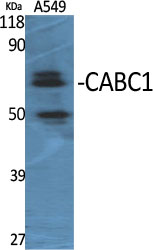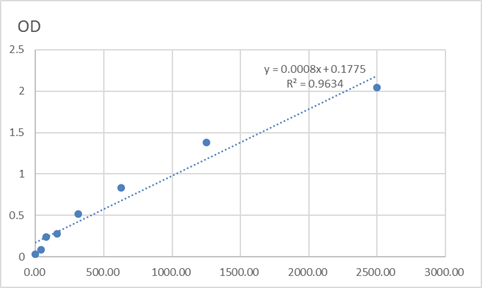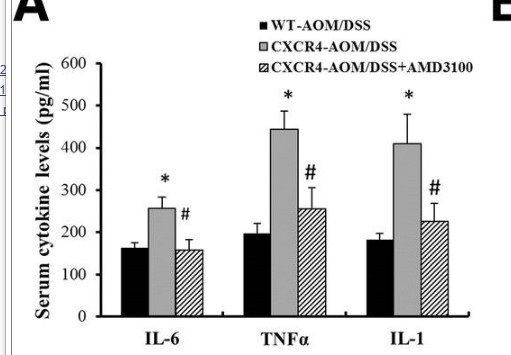Total CABC1 Cell-Based Colorimetric ELISA Kit
- Catalog No.:KA3820C
- Applications:ELISA
- Reactivity:Human;Mouse;Rat
- Gene Name:
- CABC1
- Human Gene Id:
- 56997
- Human Swiss Prot No:
- Q8NI60
- Mouse Swiss Prot No:
- Q60936
- Rat Swiss Prot No:
- Q5BJQ0
- Storage Stability:
- 2-8°C/6 months
- Other Name:
- Chaperone activity of bc1 complex-like, mitochondrial (Chaperone-ABC1-like) (EC 2.7.11.-) (aarF domain-containing protein kinase 3)
- Detection Method:
- Colorimetric
- Background:
- disease:Defects in CABC1 are a cause of coenzyme Q10 deficiency [MIM:607426]; also known as primary CoQ10 deficiency. Coenzyme Q10 deficiency patients present a progressive neurological disorder with cerebellar atrophy, developmental delay, and hyperlactatemia.,disease:Defects in CABC1 are the cause of spinocerebellar ataxia autosomal recessive type 9 (SCAR9) [MIM:612016]; also known as autosomal recessive cerebellar ataxia type 2 (ARCA2). Spinocerebellar ataxia is a clinically and genetically heterogeneous group of cerebellar disorders. Patients show progressive incoordination of gait and often poor coordination of hands, speech and eye movements, due to degeneration of the cerebellum with variable involvement of the brainstem and spinal cord. SCAR9 is an autosomal recessive form characterized by gait ataxia and cerebellar atrophy with slow progression and few associated features. Patients can manifest brisk tendon reflexes and Hoffmann sign, mild psychomotor retardation, mild axonal degeneration of the sural nerve, exercise intolerance and elevated serum lactate.,function:May be a chaperone-like protein essential for the proper conformation and functioning of protein complexes in the respiratory chain.,induction:By p53.,similarity:Belongs to the protein kinase superfamily. ADCK protein kinase family.,similarity:Contains 1 protein kinase domain.,tissue specificity:Ubiquitously expressed with a relatively greater abundance in heart and skeletal muscle.,
- Function:
- response to hypoxia, cell death, death, response to oxygen levels,
- Subcellular Location:
- Mitochondrion . Membrane ; Single-pass membrane protein .
- Expression:
- Widely expressed, with highest levels in adrenal gland, heart, pancreas, nasal mucosa, stomach, uterus and skeletal muscle.
- June 19-2018
- WESTERN IMMUNOBLOTTING PROTOCOL
- June 19-2018
- IMMUNOHISTOCHEMISTRY-PARAFFIN PROTOCOL
- June 19-2018
- IMMUNOFLUORESCENCE PROTOCOL
- September 08-2020
- FLOW-CYTOMEYRT-PROTOCOL
- May 20-2022
- Cell-Based ELISA│解您多样本WB检测之困扰
- July 13-2018
- CELL-BASED-ELISA-PROTOCOL-FOR-ACETYL-PROTEIN
- July 13-2018
- CELL-BASED-ELISA-PROTOCOL-FOR-PHOSPHO-PROTEIN
- July 13-2018
- Antibody-FAQs



